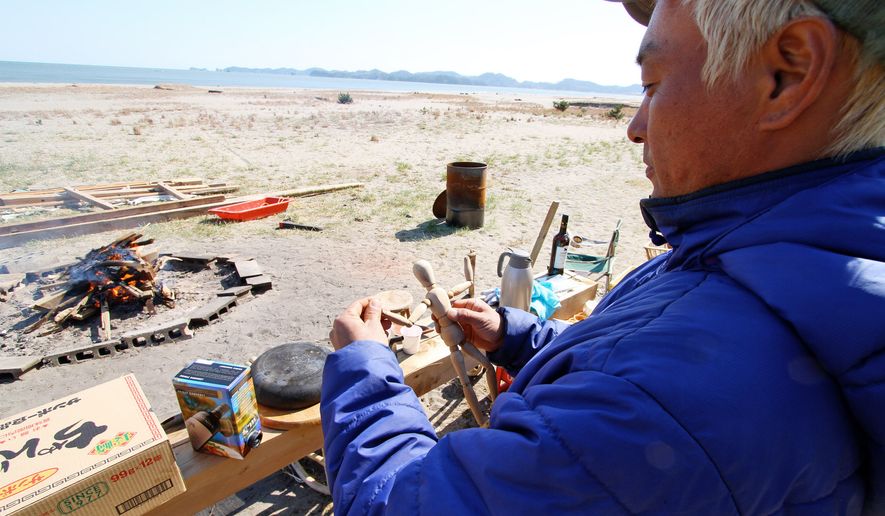HIGASHI-MATSUSHIMA, Japan — Few people know more about the power of waves than the members of the Heavy Current Surfing Club.
When they saw the tide suddenly withdraw after a massive quake on March 11, they knew a huge tsunami was coming. They all fled the picturesque beach of this town in northeastern Japan to safety on higher ground.
“We didn’t lose any members, because we respect and fear the ocean,” said Seiichi Kato, sitting by his surfboard and tent on the beach. “But other Japanese forgot about nature, and they could not escape it.”
Instead of joining the mass of refugees in clammy, overcrowded shelters, Mr. Kato, Mr. Ohyama and their surf buddies pitched tents on the beach, where they cook by campfire.
With more than 1,800 dead or missing among the 40,000 former residents of Higashi-Matsushima, survivors are trying to find ways to deal with the aftermath of the horrific disasters.
About 50 members of the surf club got together recently to clean debris off the beach.
“It made us feel a bit better,” said surfer Jun Ohyama, frying up pig hearts over a campfire on the sand.
“We were amazed that the beach looks exactly the same as before the tsunami. It destroyed everything man-made, but nature is almost the same.”
They say they are still too afraid to enter the water again, and the beach feels empty without the friendly locals walking their dogs or casting fishing hooks into a bay famous for oysters and tiny pine-clad islets.
“Many people we knew are dead, and we have no way of knowing [who survived] because everybody is scattered in shelters or at the homes of relatives,” says Shinji Yasuda, a surfer wearing hip-hop jeans and glasses. “We are lucky because we still have our friends and this beach.”
Watching soldiers searching the shoreline for corpses on a cold windy afternoon, the surfers gathered debris to fuel their campfires.
“Everything we need to live is already here,” said Mr. Kato.
“It’s just like the old days, when Japanese lived close to nature. They knew how to rebuild the world from nothing, and we are going to have to learn this, too.”
Unable to sleep in noisy evacuation centers, Mr. Kato has been spending his nights in a s tent on the soft sand, comforted by the moon and stars. Scavenging through what many Japanese call “the mountains of wreckage,” he has furnished the beach with an easy chair, sofa, table and even washed up CDs.
“Those are just for show,” he said of the compact discs. “There’s no electricity, so no way to listen to them.”
He noted that Japanese have historically rebuilt their lives after natural disasters.
“There have always been earthquakes and tsunamis here,” Mr. Kato said. “But people forgot about this. They were only thinking about their jobs and money and pachinko. Their hearts become cold and hard. Now we are forced to become like animals again, and maybe this is good for our hearts.”
Mr. Kato said he is not going to bother looking for a new job just yet. He just wants to soothe his soul by the sea breezes and sunsets for now.
Another surfer, who identified himself only by the single name “Yoshimitsu,” said the surviving residents are “50-50” about whether to rebuild.
“This is a beautiful place, and people really loved living here by the sea,” he said. “But now many people are afraid, and they have no money to rebuild.”
He said many survivors want the government to buy their land and turn the obliteration zones into public parkland to highlight the natural beauty of the spiky pine trees and the soft gray sands.
“This is still the most beautiful place in Japan, and we don’t want to move away, even if another tsunami is going to come,” he said.
“If we respect and fear the ocean, as we should, not so many people will die next time.”




Please read our comment policy before commenting.